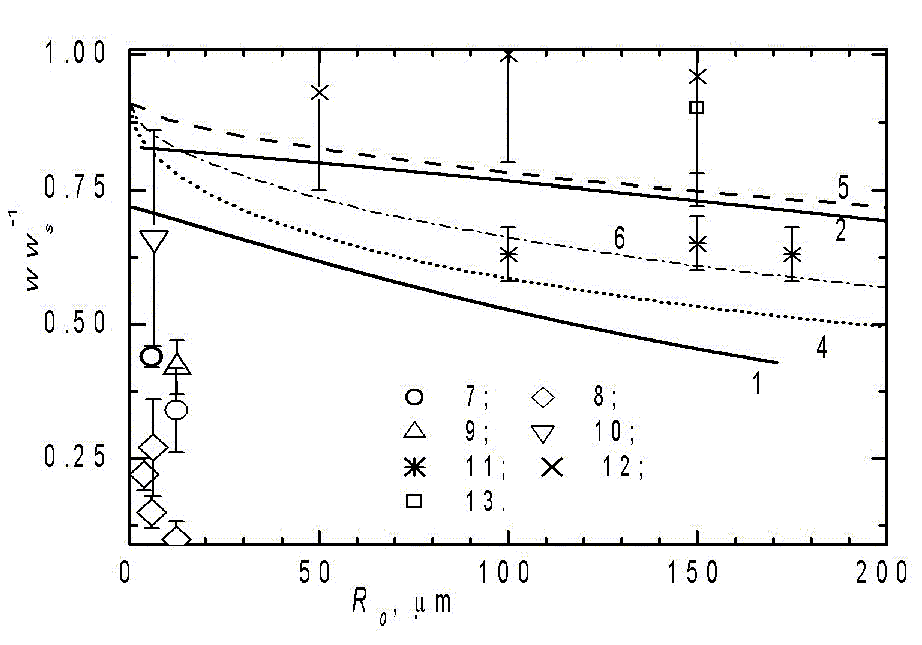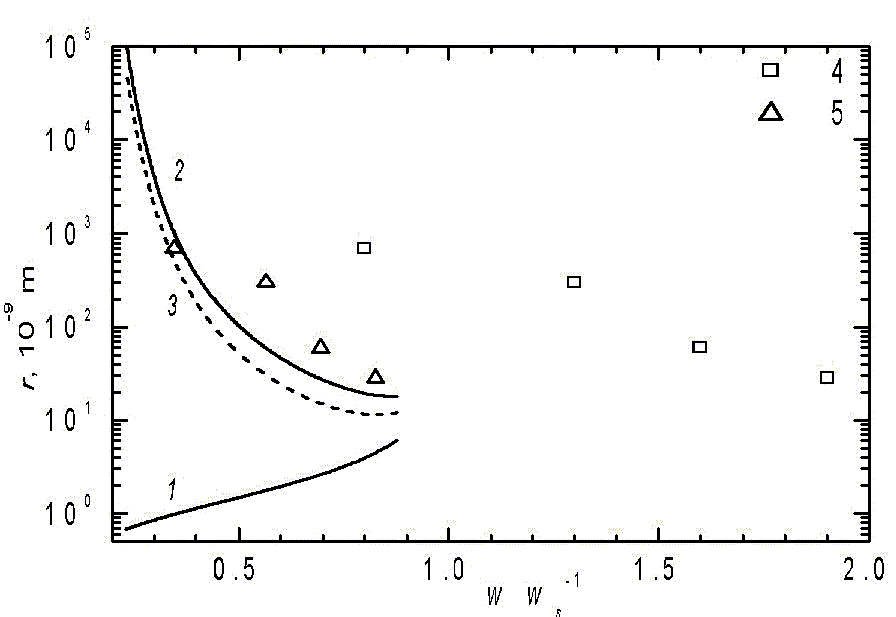
The interest in the initial phase of wire explosion is shown both by investigators of later stages of explosion, and by material scientists. The expansion rate and uniformity of the wire in the later plasma phase of explosion depend strongly on the amount of energy deposited in the wire during this short resistive heating phase. On the other hand, the increase of energy deposition extends the range of matter states accessible for investigations.
According to the thermodynamic mechanism of wire explosion [1, 2] the compression of the liquid core of the wire caused by a magnetic field has the following consequences: (i) substance of liquid core does not reach its boiling conditions; (ii) the equilibrium pressure of the vapor coexisting with the liquid core exceeds the saturation vapor pressure, ps. The limit value of vapor supersaturation is defined by gas spinodal parameters. Had the vapor parameters reach the spinodal values, the vapor would instantaneously transform into dispersed system (liquid droplets and vapor). But the growing liquid droplets can appear at lower degree of the vapor supersaturation causing earlier transition into dispersed state. These two cases are referred to as spinodal mechanism of explosion (SME) and nucleus mechanism of explosion (NME) respectively [1].

Figure 1: The maximum deposited energy versus the initial radius calculated for (1)Al, (2)Cu and (4-6)W wires. (7)The experimental data from [3] for W wires with insulate coating, (8) for W, (9) Al and (10) Cu bare wires. (11) The experimental data from [5] for W, (12) Cu and (13) Al wires submerged in water. (ws is the sublimation energy).

Figure 2: (1) Minimum, (2) maximum and (3) mean sizes of metal particles remaining after the explosion of tungsten wire versus the deposited energy. (4) The data from [6] and (5) corrected data.